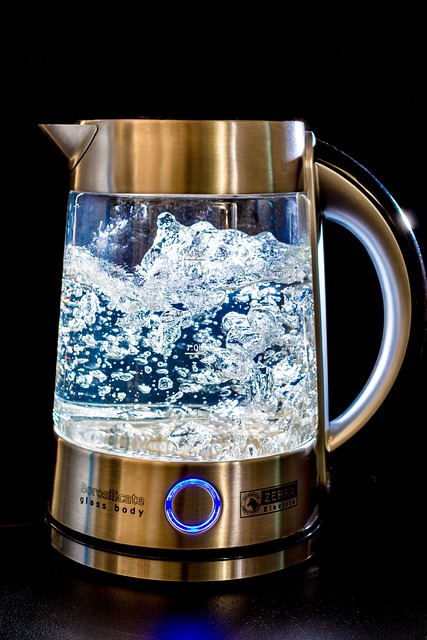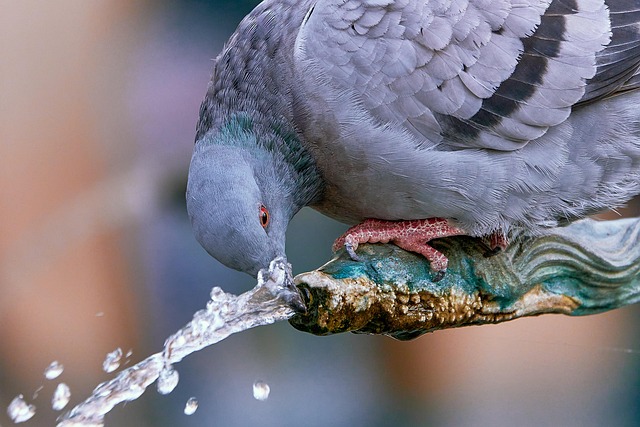Water heater maintenance is key to preventing costly failures and ensuring consistent hot water supply. The primary cause of issues is sediment buildup, which can be mitigated by regular flushing and cleaning. Other factors like age, installation, insulation, and temperature settings also impact performance. By following a simple step-by-step guide for draining and flushing the system, homeowners can extend their water heater's lifespan, prevent mineral buildup, corrosion, and unexpected breakdowns, ultimately saving money on repairs or replacements.
Avoid costly water heater failures with regular drainage—a simple yet powerful maintenance task. Understanding common causes of failure, such as mineral buildup and sediment accumulation, is key to preventing unexpected breakdowns. This article guides you through a step-by-step process to properly maintain and drain your water heater, ensuring optimal performance and longevity. Implement these practices for effective #waterHeaterMaintenance and peace of mind.
- Understanding Water Heater Failure: Common Causes and Risks
- The Power of Regular Drainage: Why It's Essential
- Step-by-Step Guide: How to Properly Maintain and Drain Your Water Heater
Understanding Water Heater Failure: Common Causes and Risks

Water heater failure can be a frustrating and costly experience, leading to cold showers and potential plumbing emergencies. Understanding the common causes and risks is the first step in preventing such issues. One of the primary culprits is sediment buildup, which occurs when mineral deposits, dirt, and other debris accumulate at the bottom of your water heater tank over time. This not only reduces the efficiency of the unit but can also lead to serious damage if left unchecked.
Other factors contributing to water heater failure include old age, incorrect installation, inadequate insulation, and improper temperature settings. Regular water heater maintenance, including flushing and cleaning, is crucial in mitigating these risks. By eliminating sediment buildup and ensuring optimal operating conditions, you can significantly extend the lifespan of your water heater and avoid unexpected breakdowns.
The Power of Regular Drainage: Why It's Essential

Regular drainage is a powerful tool in the arsenal of any homeowner looking to maintain their water heater efficiently. It involves a simple yet effective process of emptying and cleaning the tank’s sediment trap, which collects various debris over time, including minerals, dirt, and even small particles from the water supply. This build-up can lead to significant issues if left unattended, as it not only reduces the water heater’s energy efficiency but also poses a risk of failure.
By regularly draining the tank, you prevent these sediment accumulations from causing blockages or restricting water flow. It ensures optimal performance and prolongs the life of your water heater, saving you from costly repairs or premature replacements. This maintenance task is a proactive approach to keeping your home’s hot water supply reliable and consistent, providing peace of mind for every family member who relies on it daily.
Step-by-Step Guide: How to Properly Maintain and Drain Your Water Heater

Maintaining your water heater is an essential aspect of home ownership, as it ensures optimal performance and longevity. One crucial task that often goes overlooked is draining and flushing the system regularly. This simple yet effective practice can prevent serious issues like mineral buildup, corrosion, and even failure.
Here’s a step-by-step guide to help you take control of your water heater maintenance:
1. Turn off the gas or electric supply to your heater, ensuring safety first.
2. Locate the drain valve at the bottom of the tank. It may be covered by a protective cover.
3. Attach a garden hose to the drain valve and direct it away from your home to avoid any mess.
4. Open the valve fully to allow the hot water to flow out, ensuring all residual water is drained.
– This process helps remove sediment buildup at the bottom of the tank.
5. After draining, close the valve and repeat the process several times until you see clear water flowing out, indicating the removal of impurities.
Regular drainage is the #1 maintenance task that can significantly extend the lifespan of your water heater, preventing costly failures. By following a simple, step-by-step guide and making this routine check a habit, you’ll ensure optimal performance and minimize potential risks. Don’t let a neglected water heater cause disruptions in your daily routines – take control today!
